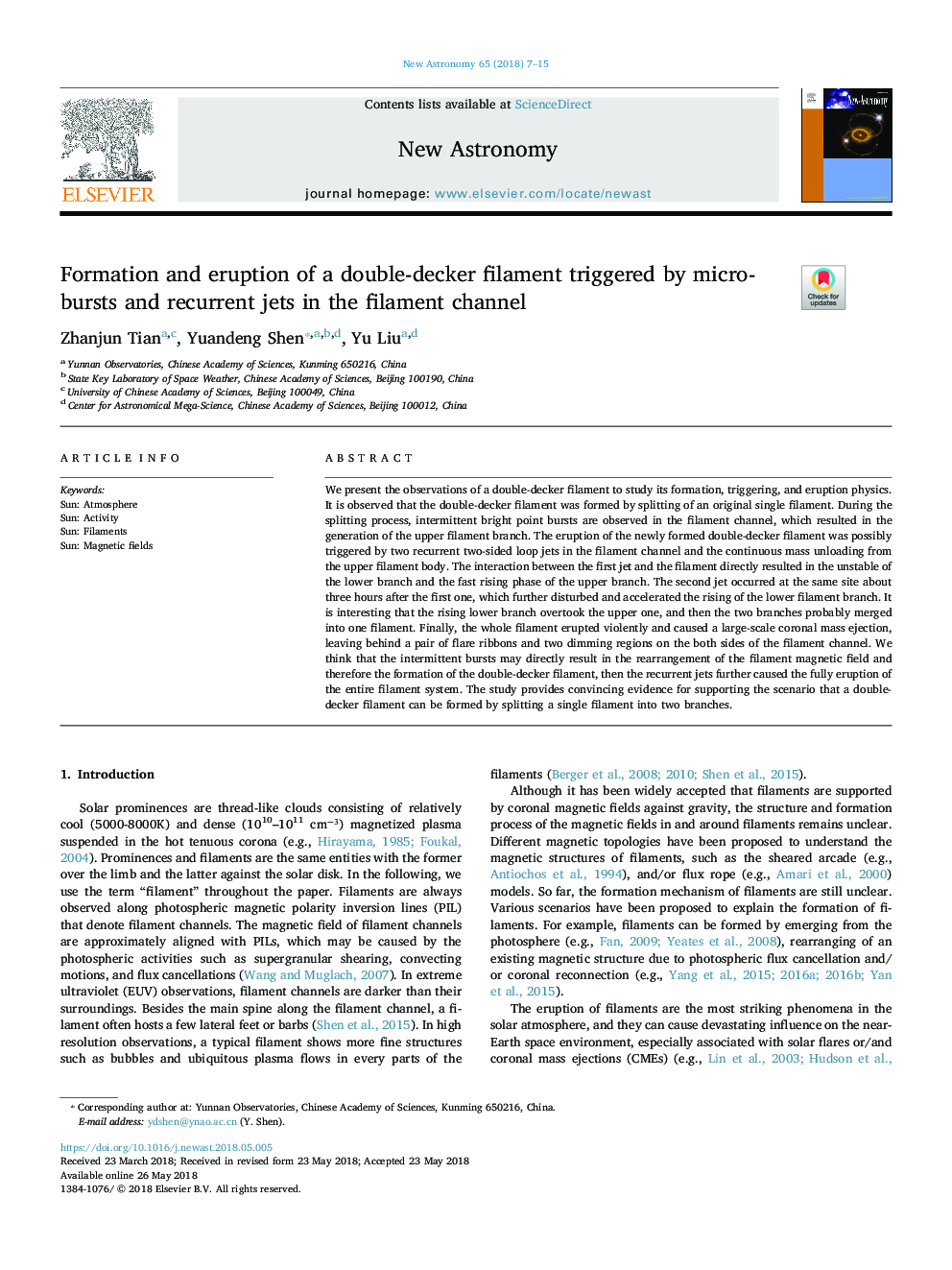| Article ID | Journal | Published Year | Pages | File Type |
|---|---|---|---|---|
| 8141221 | New Astronomy | 2018 | 9 Pages |
Abstract
We present the observations of a double-decker filament to study its formation, triggering, and eruption physics. It is observed that the double-decker filament was formed by splitting of an original single filament. During the splitting process, intermittent bright point bursts are observed in the filament channel, which resulted in the generation of the upper filament branch. The eruption of the newly formed double-decker filament was possibly triggered by two recurrent two-sided loop jets in the filament channel and the continuous mass unloading from the upper filament body. The interaction between the first jet and the filament directly resulted in the unstable of the lower branch and the fast rising phase of the upper branch. The second jet occurred at the same site about three hours after the first one, which further disturbed and accelerated the rising of the lower filament branch. It is interesting that the rising lower branch overtook the upper one, and then the two branches probably merged into one filament. Finally, the whole filament erupted violently and caused a large-scale coronal mass ejection, leaving behind a pair of flare ribbons and two dimming regions on the both sides of the filament channel. We think that the intermittent bursts may directly result in the rearrangement of the filament magnetic field and therefore the formation of the double-decker filament, then the recurrent jets further caused the fully eruption of the entire filament system. The study provides convincing evidence for supporting the scenario that a double-decker filament can be formed by splitting a single filament into two branches.
Related Topics
Physical Sciences and Engineering
Physics and Astronomy
Astronomy and Astrophysics
Authors
Zhanjun Tian, Yuandeng Shen, Yu Liu,
